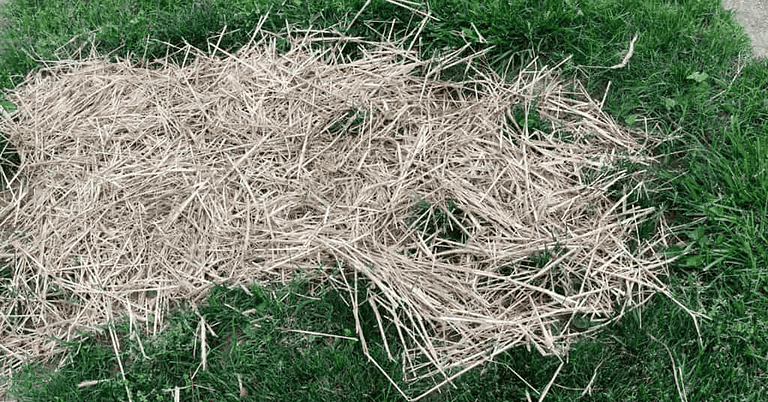Can You Plant Potatoes Too Deep
When planting potatoes, it's important to get the depth just right. If you plant them too deep, they can rot, and if you plant them too shallow, they can turn green and be unsafe to eat. The ideal depth for planting is about 4-5 inches.
This depth allows the potatoes to grow well and produce a lot of potatoes. Planting at this depth also helps protect the potatoes from pests and ensures they get enough sunlight. By planting at the right depth, you can avoid common issues and increase your chances of a successful harvest.
To find out more about growing potatoes successfully, check out the key factors that make for a good crop.
TLDR
- Yes, planting potatoes too deep can cause them to rot and grow poorly because they won't get enough sunlight and air.
- It's best to plant potatoes 4-5 inches deep for good growth and a big harvest without rot or green potatoes.
- If you plant them too shallow, they can turn green from too much sunlight and become unsafe to eat.
- Adding soil around the plants helps them grow well and avoids the issues of planting too deep that can lead to rot and poor growth.
- Planting at the right depth keeps potatoes safe from bugs and ensures they get enough sunlight for a successful harvest.
Planting Depth and Techniques

When you plant potatoes, the depth matters a lot. If you bury them too deep, they might rot. But if you don't bury them enough, they could turn green from the sun.
The best depth to plant them is about 4-5 inches. This helps them grow well and produce a lot of potatoes. Right depth is crucial to avoid issues like rot and green potatoes.
Soil Preparation and Care
To grow good potatoes, make sure the soil is loose and goes down about 12 inches. This helps the roots grow well and the potatoes develop nicely.
Taking care of the soil is important for the potatoes to grow right. It should drain well and have enough air, so the potatoes don't rot. Don't press the soil too hard because it can stop the potatoes from growing.
When you plant them, go for a depth of 4 to 5 inches. This way, they stay safe from pests but still get enough sunlight. If you prepare the soil well, you'll get lots of tasty potatoes at harvest time.
Planting in Containers and Bags

Growing potatoes in containers or bags is a simple way to garden, especially if you have limited space. To ensure your potatoes thrive, place the containers at the right depth. The container should be deep enough for the roots and allow for hilling as the plant grows. Good drainage is key to prevent overwatering, and spacing the potatoes properly will keep them from getting too crowded.
Remember to water regularly and keep an eye on your container-grown potatoes to help them grow well. Follow these tips for a successful harvest of tasty, homegrown potatoes.
Hilling Up and Mulching Tips
For a better potato crop, start adding more soil and mulch around your plants when they're about 6 inches tall. Cover the base with soil and put some straw on top.
This method, called hilling up, stops the sun from hitting the growing potatoes, which can make them turn green and lower your harvest. Mulching with straw keeps the soil moist, stops weeds, and gives nutrients to the plants.
Common Planting Mistakes to Avoid

When planting potatoes, it's crucial to avoid common mistakes for a good harvest.
One mistake is planting them too deep, leading to rot in cold and wet soil. But planting too shallow can make potatoes green and inedible from sunlight.
Aim for a depth of 6-8 inches in a trench for healthy growth and tuber development. Mound soil around the plants for support and to prevent deep planting issues.
Avoid these mistakes for a successful potato harvest.
Seed Potato Selection and Prep
To grow healthy potatoes, start by picking certified disease-free seed potatoes. This ensures your crop stays safe from harmful diseases.
Once you have your seed potatoes, cut them into pieces with at least one or two 'eyes' each. Let the cut pieces sit for a day or two to avoid rotting.
When you're ready to plant, bury the seed potatoes 4-5 inches deep with the eyes facing up so they can sprout.
Picking the right seed potatoes and preparing them well is key to a successful harvest. Just follow these steps, and you'll soon have tasty, nutritious potatoes growing in your garden.
Timing and Spacing for Success

Now that you've picked and prepped your seed potatoes, it's time to focus on the next important steps: planting them at the right time and giving them space to grow.
Make sure you plant at the best time for where you live and space your potatoes correctly for healthy growth.
Get these factors right, and you'll be on track for a successful potato harvest.
Optimal Planting Depth
Planting potatoes at the perfect depth of 4-6 inches is important for their healthy growth. This depth helps avoid problems like too much sunlight, which can slow down their development. It also prevents the potatoes from rotting in the soil due to lack of air and too much water when planted too deep.
Shallow planting can cause potatoes to turn green. By planting at the right depth, you ensure your potatoes get enough light and air. Remember, planting at the right time is crucial, usually in mid to late spring.
Follow these tips for a successful potato harvest.
Proper Spacing Matters
How far apart are you planting your potato plants, and is it affecting how well they grow?
The distance between plants is crucial for getting big, healthy potatoes. If you plant them too deep, they might've trouble growing out of the soil and end up too close together, fighting for space.
To avoid this, stick to the recommended spacing so each plant has enough room. Crowded plants can mean fewer potatoes and more chance of getting sick. By giving your potatoes plenty of space, you help them get enough sunlight, water, and nutrients to grow well.
Timing for Success
To help your potato plants grow well, plant them at a depth of 4-5 inches. This depth allows enough air and water for strong growth.
Space the plants 12-18 inches apart to prevent overcrowding and disease. Getting the timing and spacing right will give your potatoes the best chance to thrive.
Monitoring and Adjusting Growth
You should check your potatoes often to see if they're growing right. This is important so you can adjust how deep you planted them and avoid problems like planting too shallow or rot.
When you're checking on your potatoes, watch for sprouts and how they're growing. If you see any issues, change the planting depth.
As your potatoes grow, add soil bit by bit to give them good support and help the tubers grow well. By keeping an eye on how they're growing, you'll learn how to plant potatoes successfully. This will help you improve your skills and get a better harvest.
Innovative Planting Methods

Using straw-filled furrows is a smart way to plant potatoes in the ground. It helps the potatoes grow well by covering them deeply in the soil. When you plant seed potatoes using this method, it encourages strong growth.
As the plants get taller, add more straw around them to help the potatoes grow and to shield them from too much sunlight. This straw mulching trick is a key part of new ways to plant things in organic gardening.
Come harvest time, just take away the straw to see your potatoes, without disturbing the soil much. After harvesting, let the straw and old plant bits break down over winter, making the soil better for the next planting season.
This eco-friendly way of planting potatoes ensures a good harvest and keeps the soil healthy.
Conclusion
Congratulations on reaching the end of your potato planting journey! By now, you should have a good grasp of how to plant potatoes correctly.
Remember, the depth at which you plant them is crucial, and preparing the soil properly is essential.
Avoid common mistakes, select the right seed potatoes, and monitor your crop's growth progress.
By following these tips and techniques, you'll be on your way to a successful potato harvest.
Happy planting!







